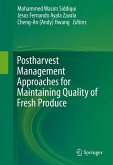Consumer markets for foods and beverages in developed countries are well supplied and highly fragmented. Yet, the question being asked is how close retailers actually come to fulfilling their customers' requirements. The concept of consumer value is one of the main pillars underpinning the theory of market differentiation. This book takes an interdisciplinary approach to the analysis of satisfaction in relation to the consumption of food, with both food science and consumer science playing central parts. It approaches food quality from both the technical and the consumer satisfaction perspectives, and assesses the roles of management and regulatory tools in delivering food quality for all. Each area is discussed in detail, using the appropriate technical terminology, but keeping the text accessible to readers from both academic traditions, as well as to non-specialist readers.
From the reviews: "This book might lead to a better understanding of what is important about foods and of what motivates food choice. The book is of special interest for those who have been frustrated with the polarity of the debate about what is good and bad in food. ... Furthermore, it is a valuable resource for those involved in the communication, teaching and researching of food issues, of consumer and marketing issues, and to students in each of these areas." (AFS - Advances in Food Science, Vol. 25 (2), 2003)








